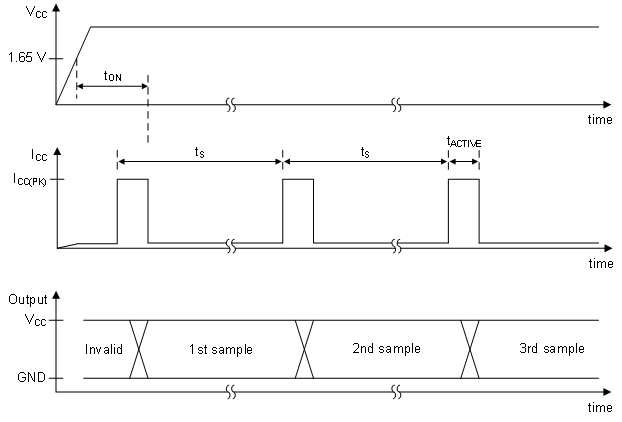SLYS042D August 2021 – September 2022 TMAG5231
PRODUCTION DATA
- 1 Features
- 2 Applications
- 3 Description
- 4 Revision History
- 5 Device Comparison
- 6 Pin Configuration and Functions
- 7 Specifications
- 8 Detailed Description
- 9 Application and Implementation
- 10Device and Documentation Support
- 11Mechanical and Packaging Information
Package Options
Mechanical Data (Package|Pins)
Thermal pad, mechanical data (Package|Pins)
- DMR|4
Orderable Information
8.3.4 Sampling Rate
When the TMAG5231 powers up, the device measures the first magnetic sample and sets the output within the tON time. The output is latched, and the device enters an ultra low power sleep state. After each tS time has passed, the device measures a new sample and updates the output if necessary. If the magnetic field does not change between periods, the output also does not change.
 Figure 8-5 Timing Diagram
Figure 8-5 Timing Diagram